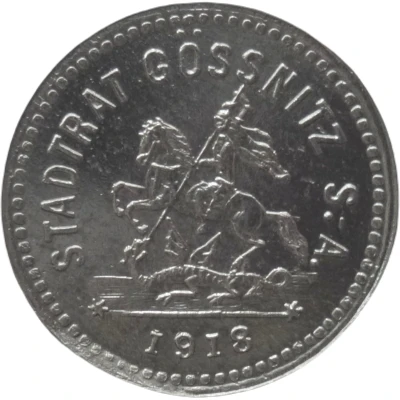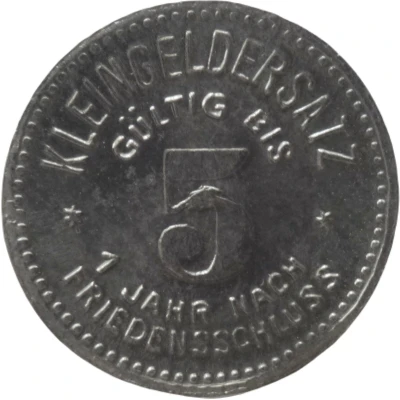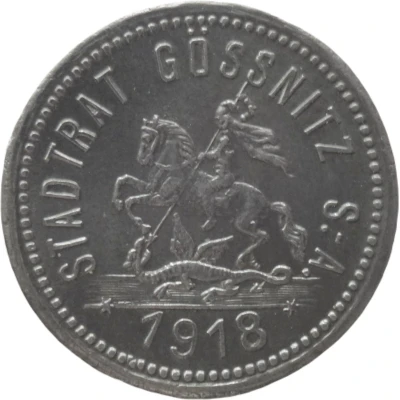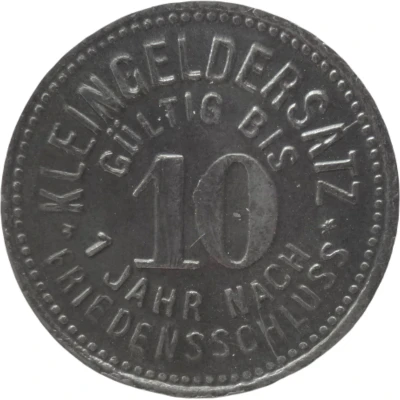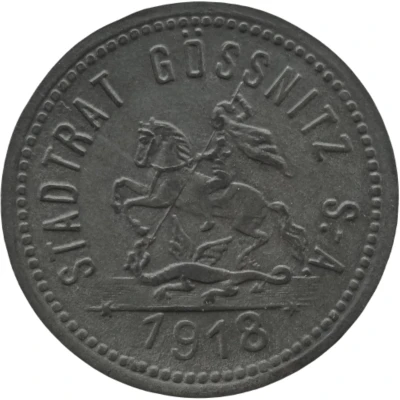
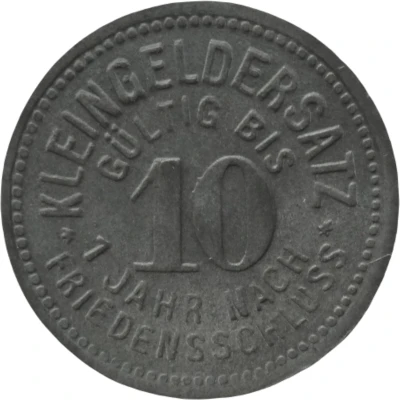

© Willem63 (CC BY-NC-SA)
10 Pfennigs - Gössnitz
1918 year| Zinc | 2.1 g | 19.8 mm |
| Issuer | City of Gößnitz (Saxe-Altenburg) (Federal state of Saxe-Altenburg) |
|---|---|
| Type | Standard circulation coin |
| Year | 1918 |
| Value | 10 Pfennigs (10 Pfennige) (0.10) |
| Currency | Mark (1914-1924) |
| Composition | Zinc |
| Weight | 2.1 g |
| Diameter | 19.8 mm |
| Thickness | 1.1 mm |
| Shape | Round |
| Technique | Milled |
| Orientation | Medal alignment ↑↑ |
| Demonetized | Yes |
| Updated | 2024-10-04 |
| Numista | N#76187 |
|---|---|
| Rarity index | 87% |
Reverse
Beaded rim, double line legend surrounding denomination centered
Script: Latin
Lettering:
KLEINGELDERSATZ
GÜLTIG BIS
10
1 JAHR NACH
FRIEDENSSCHLUSS
Edge
Plain
Interesting fact
The 10 Pfennigs coin from Gössnitz (Saxe-Altenburg) issued in 1918 is interesting because it was made of zinc, which was a unusual choice of material for coins at that time. Most coins were made of metals like silver, gold, or copper, but the use of zinc in this case was likely due to the scarcity of other metals during World War I. This coin is a unique example of how the materials used in coin production can be influenced by historical events.
